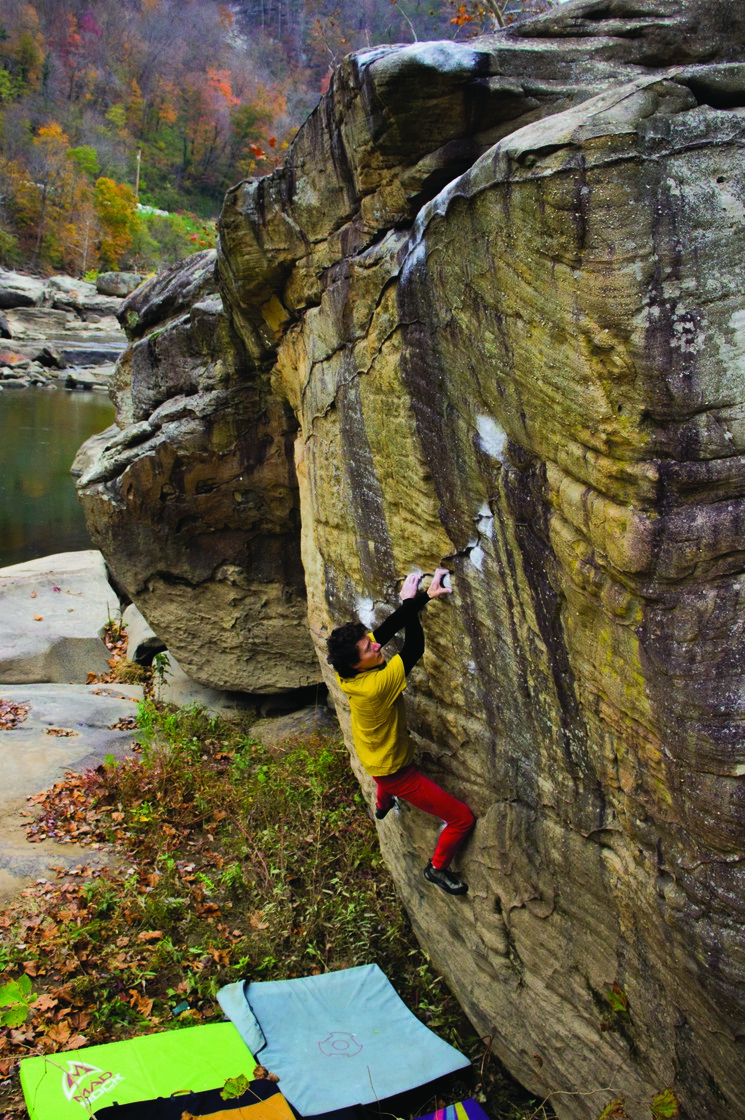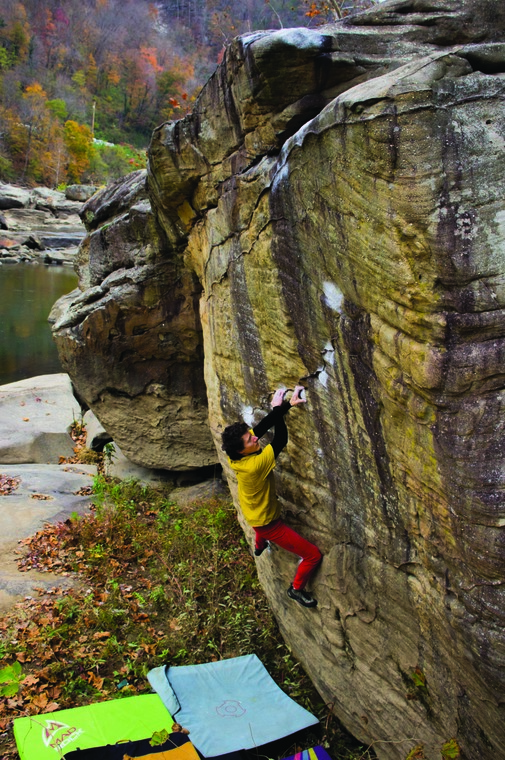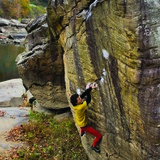Originally this area was easily accessible, by a quick rock-hop or trivial wade across the New River from the main Hawks Nest Bouldering area. The minimum water level has been raised on the New, making the river crossing a far greater undertaking and inadvisable except during the summer when swimming is in-season. Now, a longer walk leads to rarely trafficked boulders, with the same impressive backdrop of the Hawks Nest Dam. The king line here is "Iron Age" V6: a stunning yellow-orange face with an impressive iron band with holds. Be ready to do some landing work as even at minimum flow a pool of water sits under this block.
🚶♂️ Approach summary - Mildly rugged, about 40 minutes, mostly along railroad tracks.
💎 Notable problems - "Over the Rim" V1, "Beaming Five Yards" V4, "Foot Doctor" V4, **"Iron Age" V7, **"Breaking the Cast" V7
💧 Dry time - Hours. Extremely quickly for most boulders. No additional wait time needed once rock is visibly dry.
🍂❄️🍃 Seasonal Beta - Best fall to spring, it is warm on the river in the summer. This area melts very quickly from snow. The water stays consistently lower at the end of the summer through fall.
🌊 Water Level Beta - Highly water dependent, see below.
🚗 Drive from downtown Fayetteville - 10 minutes
🚗 Drive from Summersville - 35 minutes
🚽 Bathrooms - None currently. Possible installation of pit toilets in the parking eventually.
📶 Cell phone service - 3/5, variable.
🐶 Dogs - Are allowed. Be careful with your dog along railroad tracks.
**Iron Age is the stand out line at this area and is worth the trip on its own. However, the landing for this boulder is always under a small amount of water, ever since the minimum flow below the dam was raised. Check to be sure the water is at minimum flow before making the long walk to this area. The lowest possible current water level is about 4.35ft. You can check https://waterdata.usgs.gov/monitoring-location/380649081083301/ for the current and recent water levels.
What to Do if the Dam Siren Sounds:
Don't Panic (Midwesterners: it's not a tornado). When the siren goes off it means that they will open up the dam. Maybe. If they do, it will happen 5 minutes after the siren ENDS. Notice all the little gates in the dam. When they open the dam all they do is raise one of these gates about a foot.The giant doors make a clicking sound as they are slowly hauled up. As water starts to come through, the river level gradually rises. If you are working something right at the edge of the water, calmly move to a different boulder. If the siren sounds again, they will open the gate further or open up a different gate. Just pick a boulder that has a higher elevation or pick a different boulderfield if the water level starts getting too high.
***Please note that this is not true every time. Someday the person monitoring the water levels above the dam may fall asleep or something and wake up to find too much water behind the dam. Then who knows, maybe they'll open a door all the way without warning. Maybe the dam will explode. Just be smart. If you hear an unidentified loud clicking noise and/or notice water coming out from a gate, gather your things and back up from the edge of the water.





